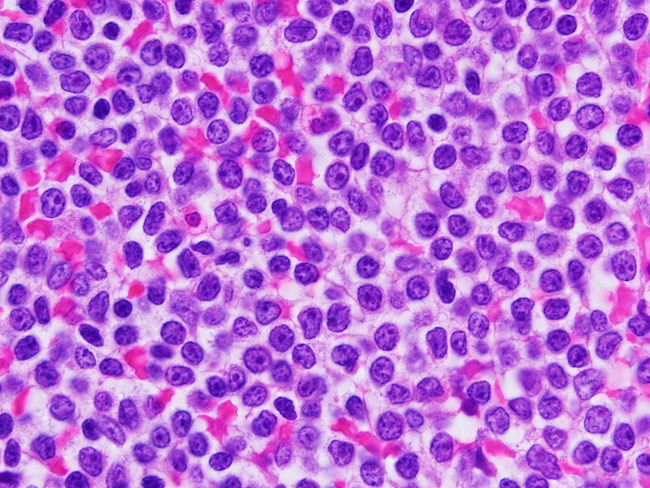B-cell Prolymphocytic Leukemia : Treatment


Comments:
Treatment: B-cell prolymphocytic leukemia (B-PLL) is an aggressive malignancy with poor prognosis. The median survival is around 3 years. Del 17p or TP53 mutations, seen in 50% of cases, are associated with resistance to first-like chemotherapy drugs. Patients with MYC aberrations have a significantly shortened survival time. Lymphocyte count > 100,000/μL and hemoglobin < 11 g/dl are other adverse prognostic indicators. Based on MYC and 17p status, 3 prognostic subgroups have been proposed: high-risk (MYC activation + del17p), intermediate-risk (MYC activation, no del17p), and low-risk (no MYC activation, no del17p). The treatment regimens for B-PLL are often those employed to treat chronic lymphocytic leukemia. Patients without 17p deletion or TP53 mutation are initially treated with a combination of fludarabine, cyclophosphamide, and rituximab. Those with 17p deletion and/or TP53 mutation have primary resistance to purine analogs and alkylating agents and are given newer agents like alemtuzumab (anti-CD52 antibody) and ibrutinib (Bruton tyrosine kinase inhibitor). Allogeneic bone marrow transplantation is a consideration for younger patients with a good performance status who show good response to initial therapy. Image courtesy of: Teresa Scordino, MD; used with permission.


